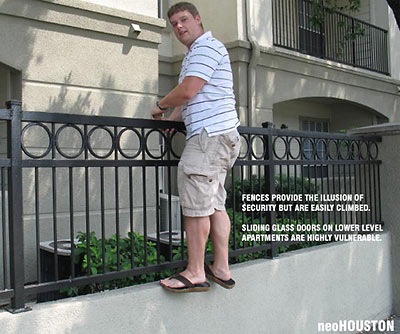
Blogging at NeoHouston, Andrew Burleson declares that the connections a building has to the world around it — what he calls its interface — have a big effect on value:
A house may be great, but if it doesn’t have a nice front yard it won’t be worth as much as the house next door that does. Likewise, homes in an area with lots of big trees tend to be valued higher than places without them. The interface is better.
Well, sure. Big trees is nice! But Burleson also claims that the value effects of interface success — and suckage — can travel:
Interfaces are highly radiant, they have a significant impact on the values of surrounding properties, and this value has a tendency to spread. If a street is truly beautiful, every adjacent property is likely to be highly valued. If a street is very ugly, every adjacent property is likely to be somewhat undervalued, even if some individual structures on that street are highly valued.
So why are we jumping over fences in Midtown? It’s all part of Burleson’s photo tour of the “interfaces” of 3 apartment complexes within a few blocks of each other: The Post Midtown Square (the good), the Camden Midtown Apartments (the bad), and 2222 Smith Street (the so-so).
***
First up: The Post Midtown Square.
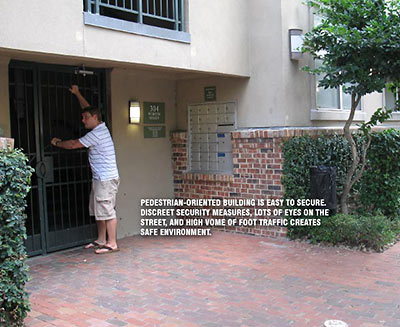
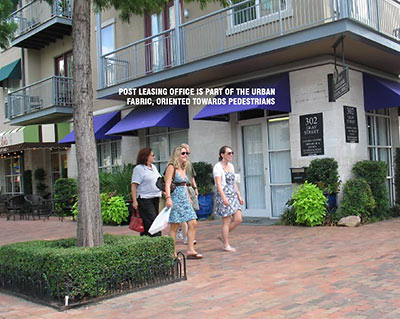
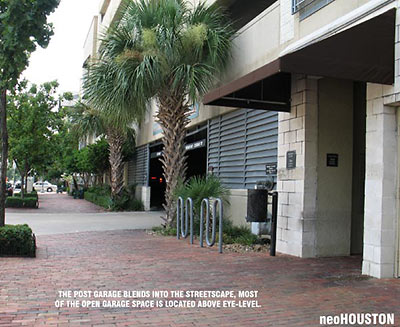
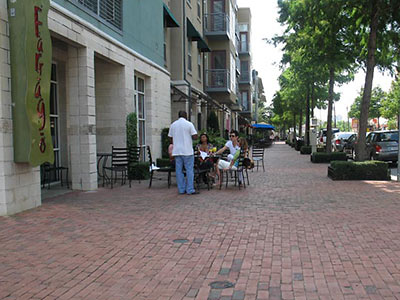
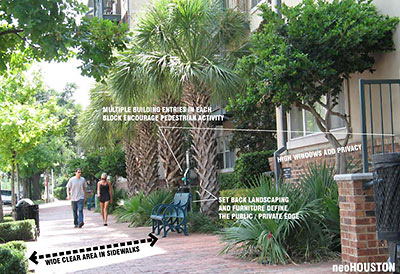
Next: The evil Camden Midtown.
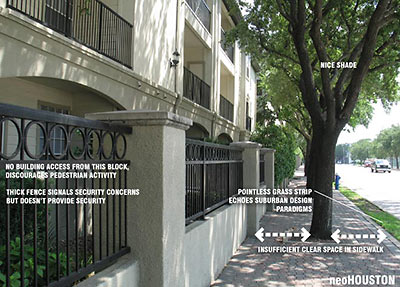
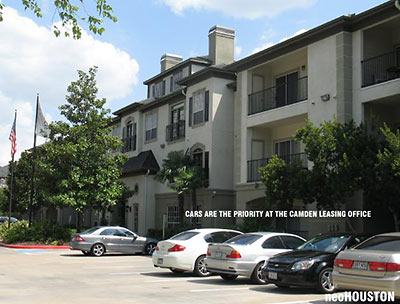
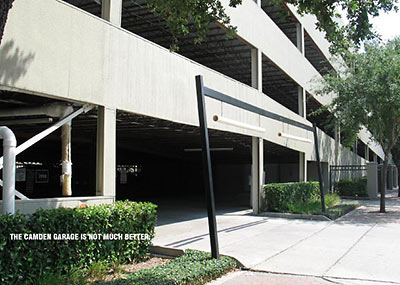
Oh, and that was the Camden we were trying to break into earlier. Cops coming — dive!

And last: the okey-doke 2222 Smith Street apartments.
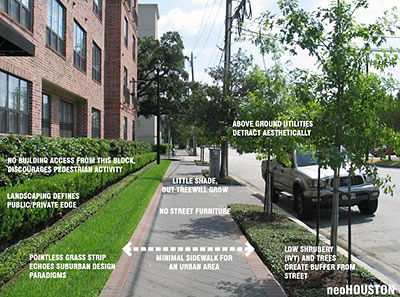
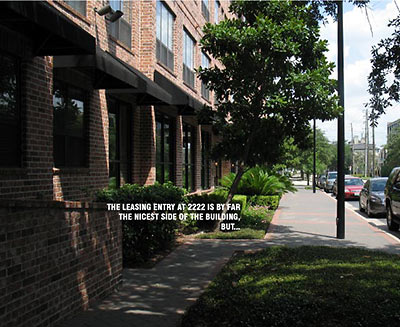
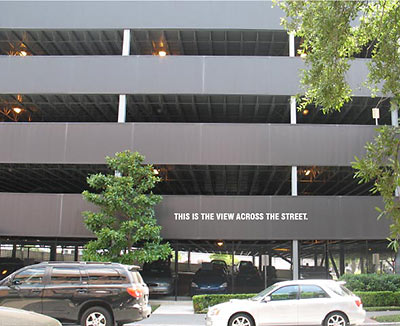
Larger versions of all these images are on NeoHouston.
So what’s it all mean? Burleson colors a map for us,
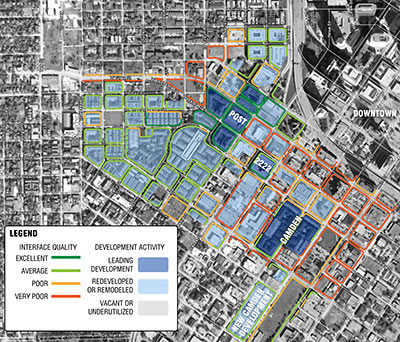
and claims that more than a decade after they were built the Post apartments are still spreading the joy — just not in the direction of that CVS:
Camden and Post were built at about the same time, in areas that were very, very similar to each other at the time of construction. But redevelopment activity spread very successfully to the north, south, and west of Post Midtown, whereas very little redevelopment activity spread from Camden at all. East of Post the redevelopment activity is significantly dampened by the CVS development. Cut off from Post, developers further east of CVS weren’t able to effectively capture the foot-traffic coming off of Post, and so they made little effort to try and start a new cell of street-life.
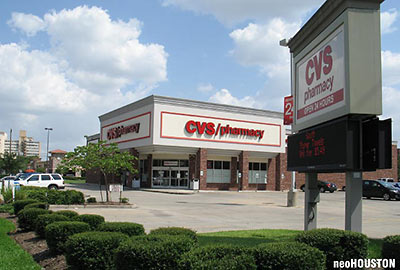
- Comparing Interfaces: The difference between good urbanism and bad [NeoHouston]
- Intro to Property Value Theory (working document) [NeoHouston]
- Property Value Theory, Part 2: Interfaces and Conduits [NeoHouston]
- Comment of the Day: The Midtown CVS Domino Effect [Swamplot]
Images: Andrew Burleson


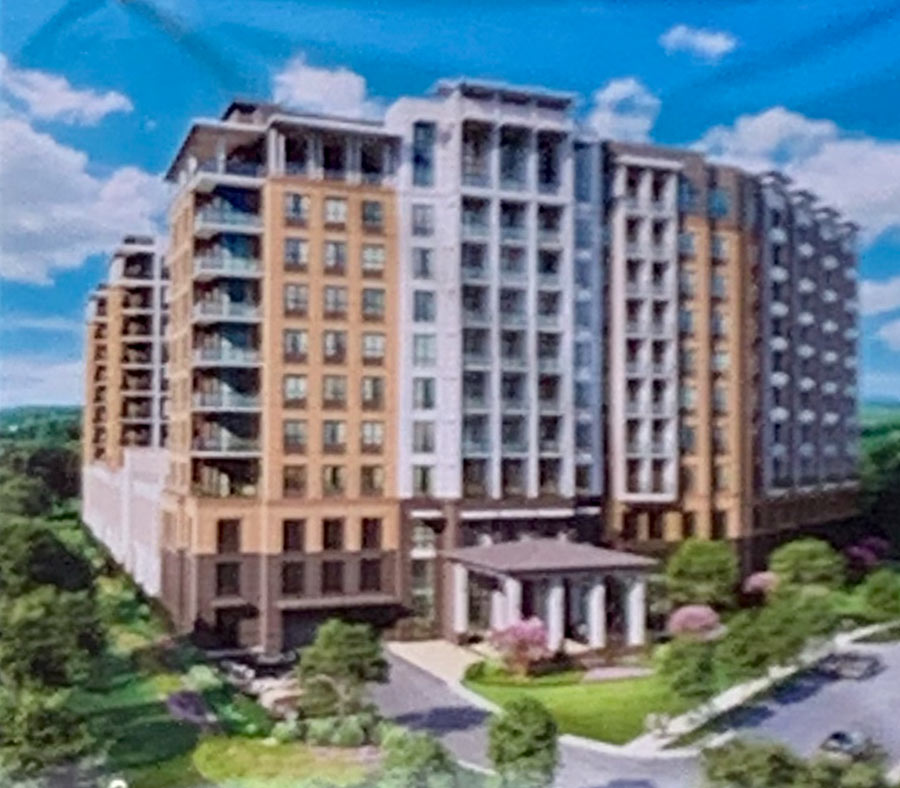
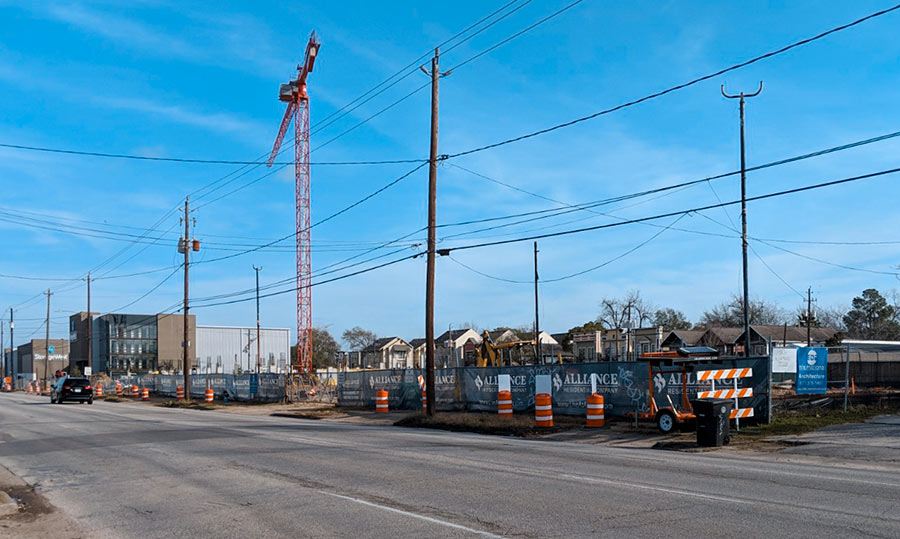
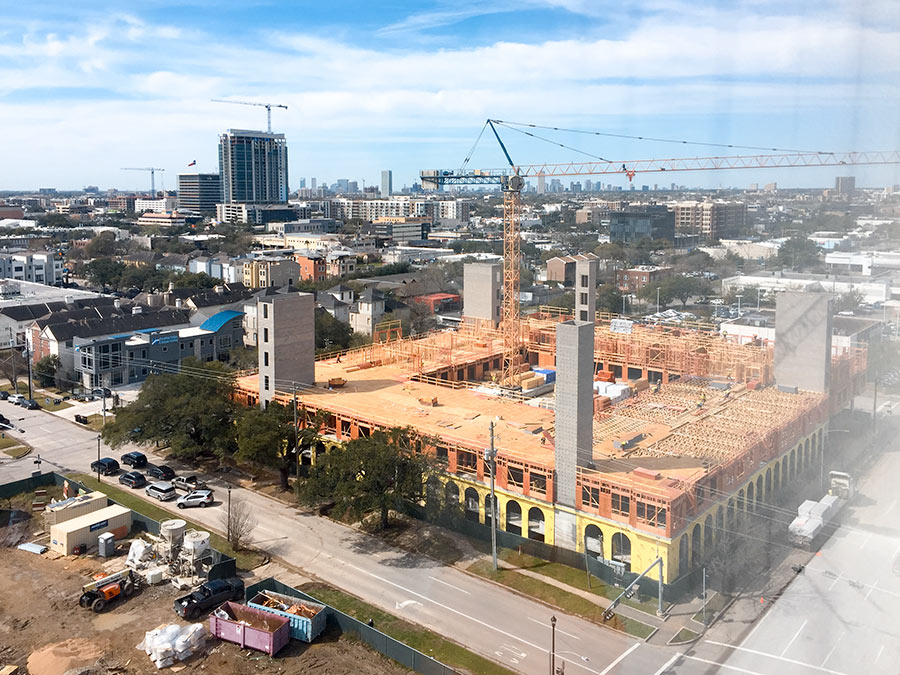
Excellent observations.
Very interesting and entertaining too. Damn CVS!
Excellent post. All your observations are amply supported in a book called Suburban Nation and Home From Nowhere by James Howard Kunstler.
Nothing gives gravitas to an article like the “expert” wearing flip flops. It’s the end of the world.
Hey Brazosdog– There is a simultaneous post running now about re-naming Hillcroft for Gandhi. What’s the common thread here?
“Sometimes the truth wears flip flops”
Actually, big trees _are_ nice.
So the property owner that kept the previously planted trees is bad compared to owner that planted tree that don’t provide shade?
I’m not sure I’d call the Post an outstanding property. It is poorly constructed and has had numerous water leaks as a result. They just had to redo the section by Cyclone Anayas for the third time at least since inception. If I had a house like that it would be a lemon.